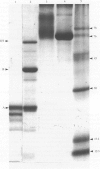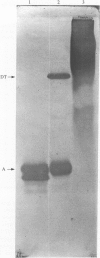Abstract
Examination of a selection of serum samples from adults from two regions of England showed that 50% of men in the 16-24 years and over 55 years age groups had high titres of antibody to diphtheria toxin (DT). In contrast, only 11% of women aged 16 to over 55 years had high titres of antibody to DT. All human antisera with high anti-DT titres reacted with a synthetic peptide (SP) corresponding to the amino acids 141-157 of DT fragment A, with sera from men aged 35 to over 55 years showing the highest titres. High antibody titres to fragment A paralleled those to SP in both sexes. Titres of antibody to DT fragment B were highest in individuals with high titres to DT. In sera from both sexes immunoglobulin G1 was the predominant subclass reactive with all three antigens. However, both IgG1 and IgG4 and to a lesser extent IgG2 and IgG3 were present in immunoglobulin concentrates.
Full text
PDF
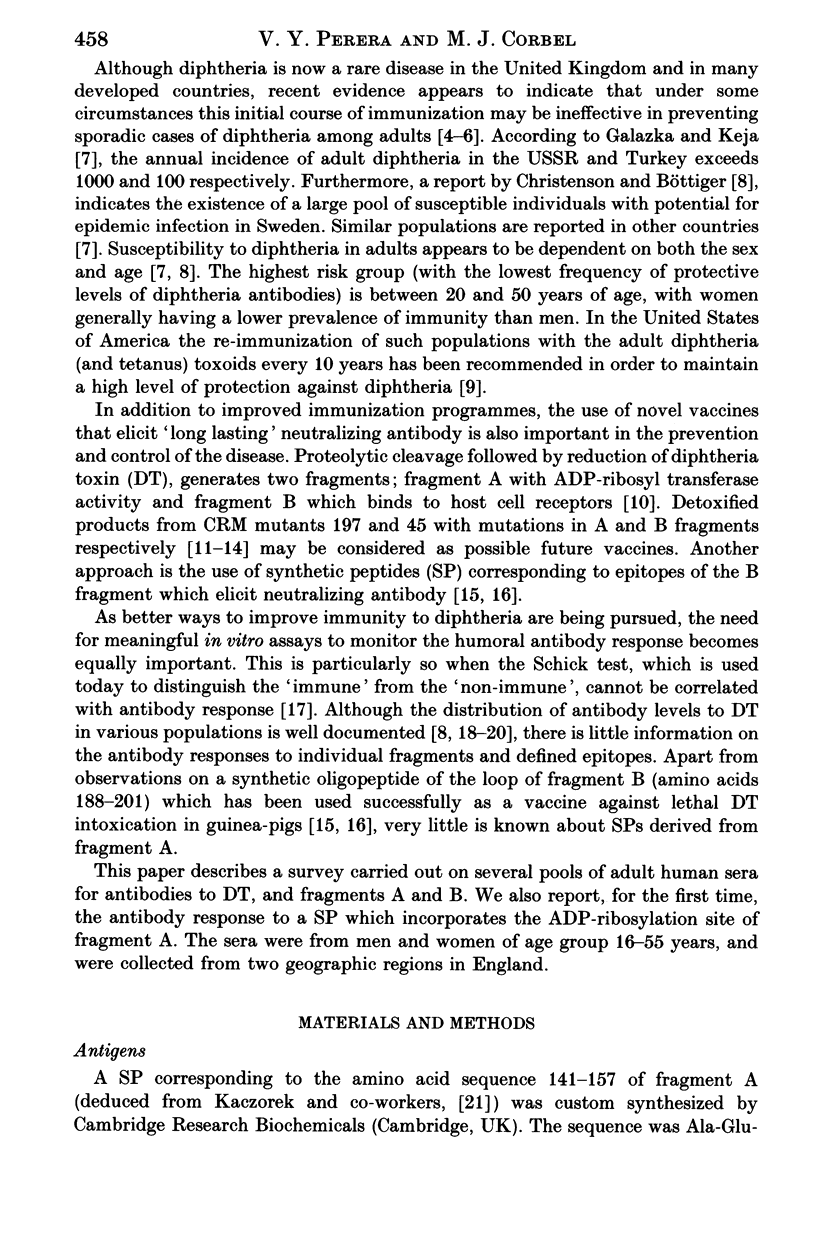
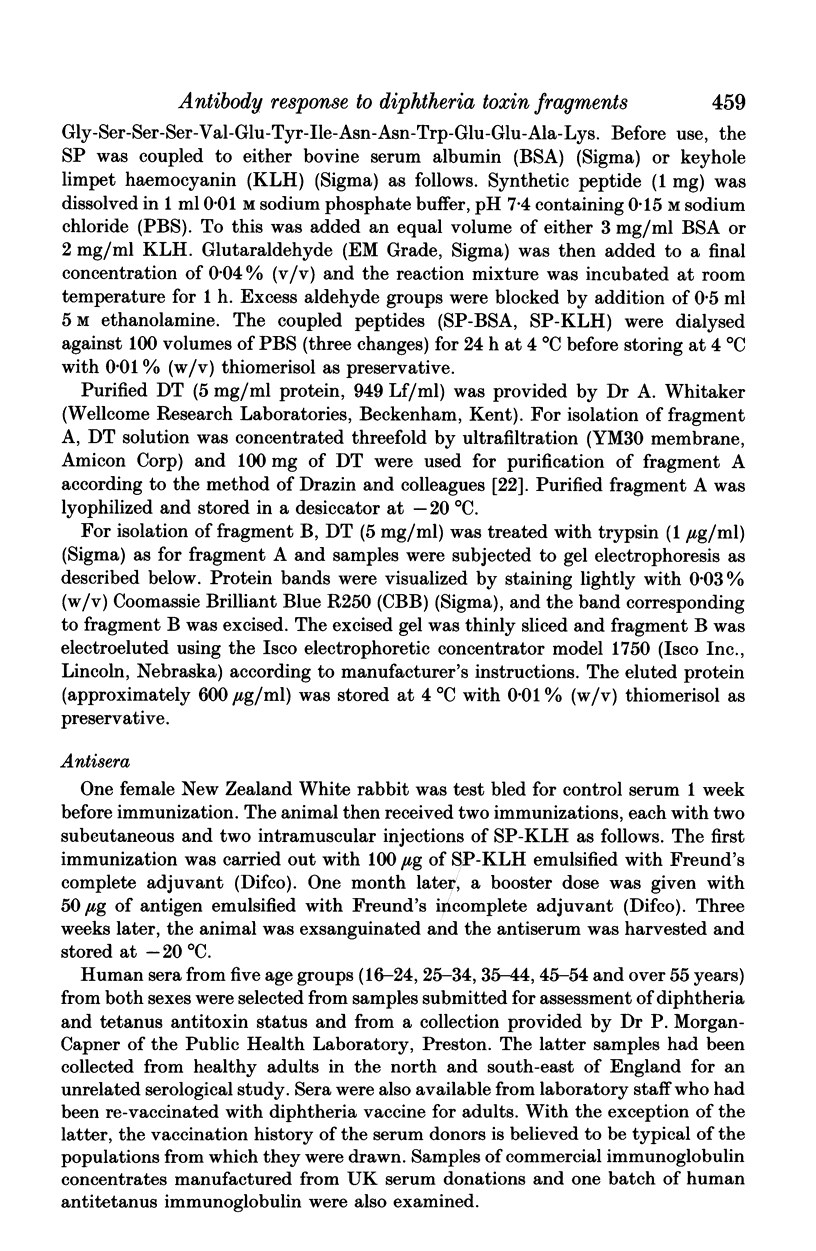
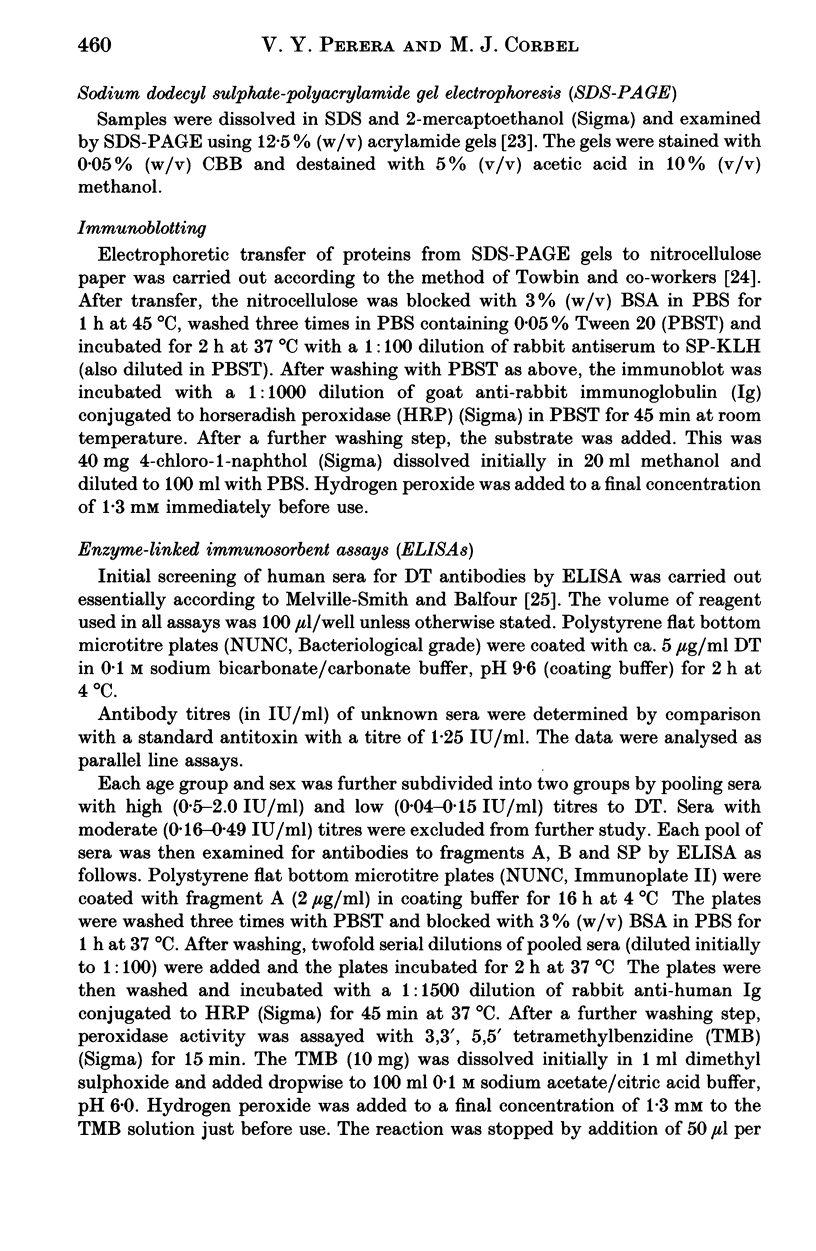

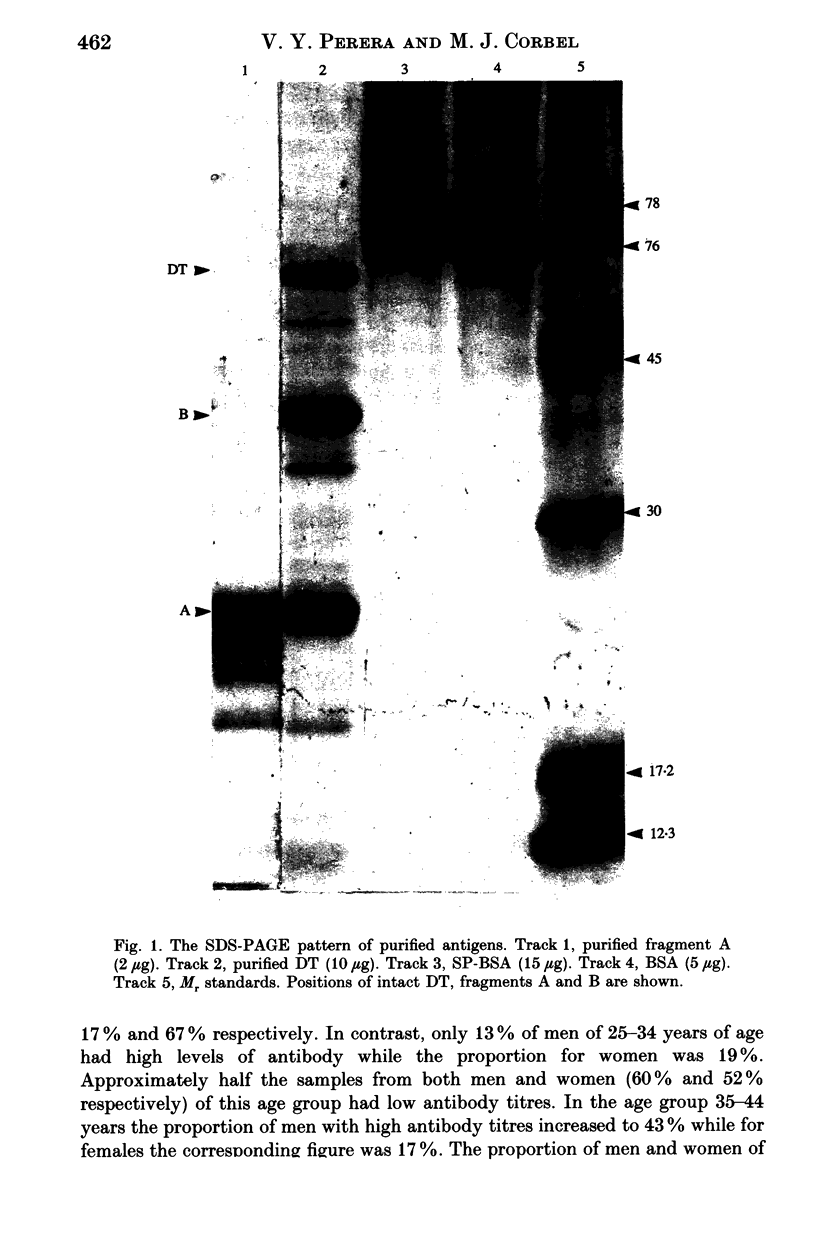
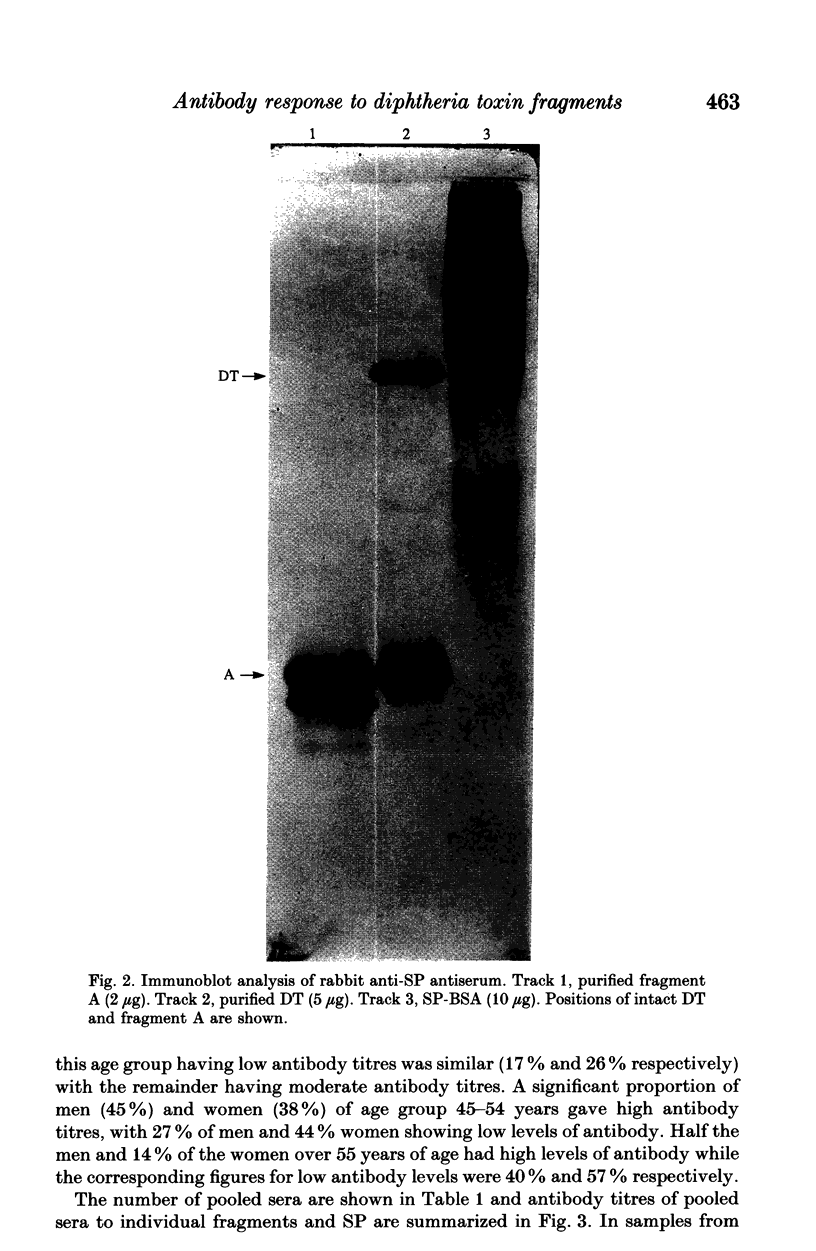
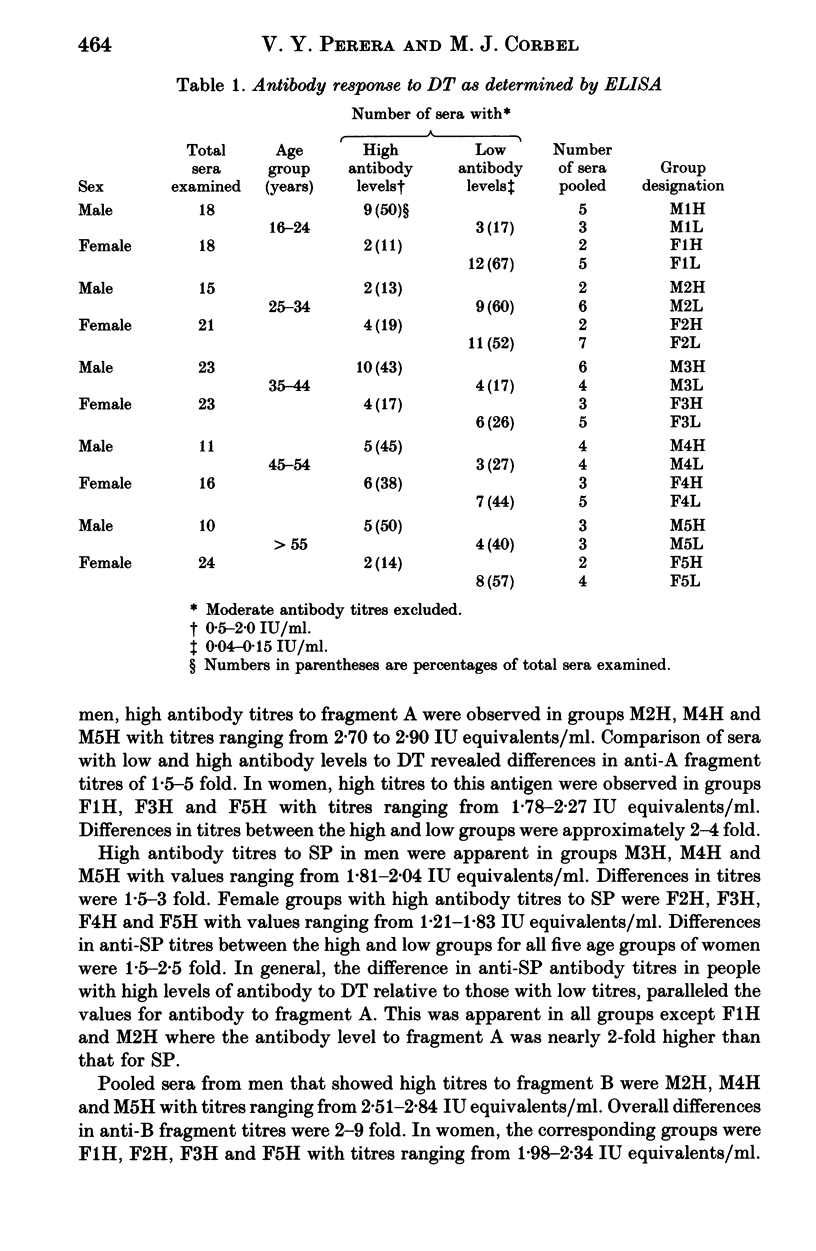
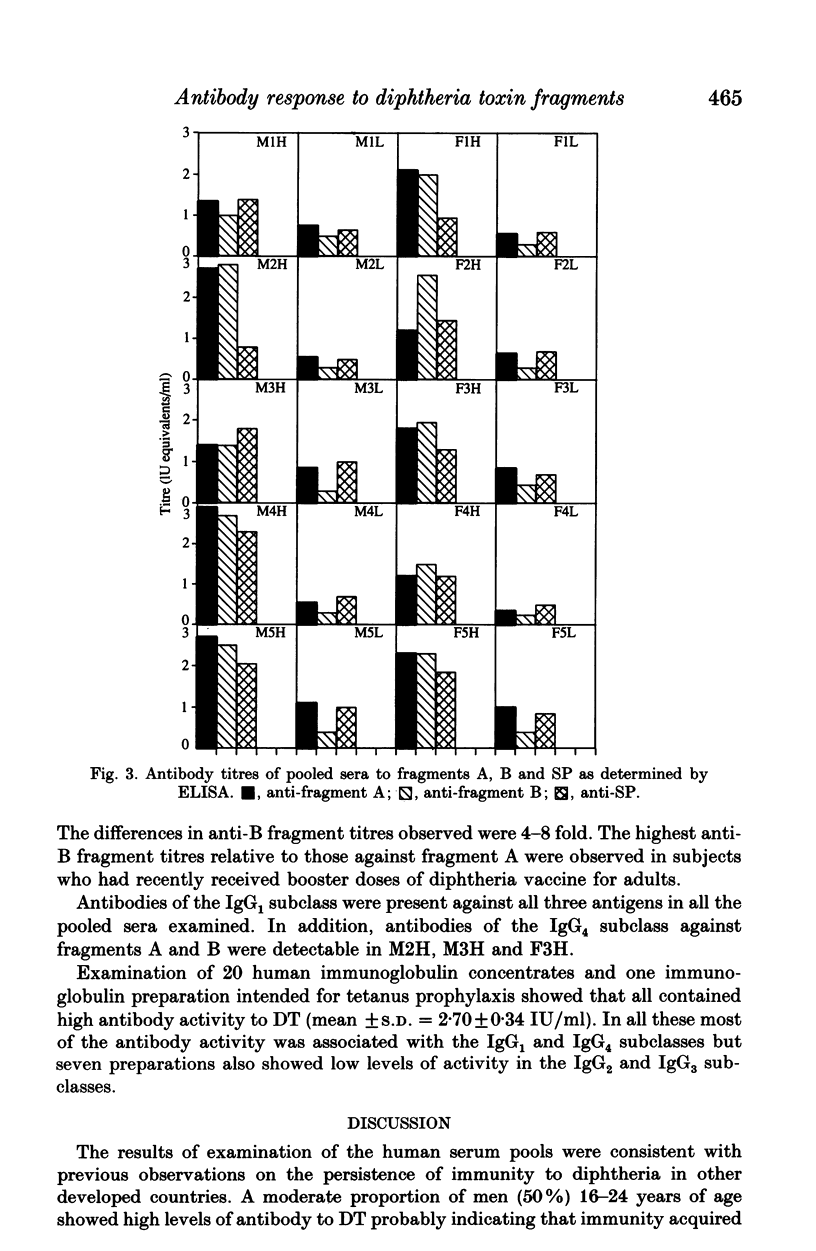
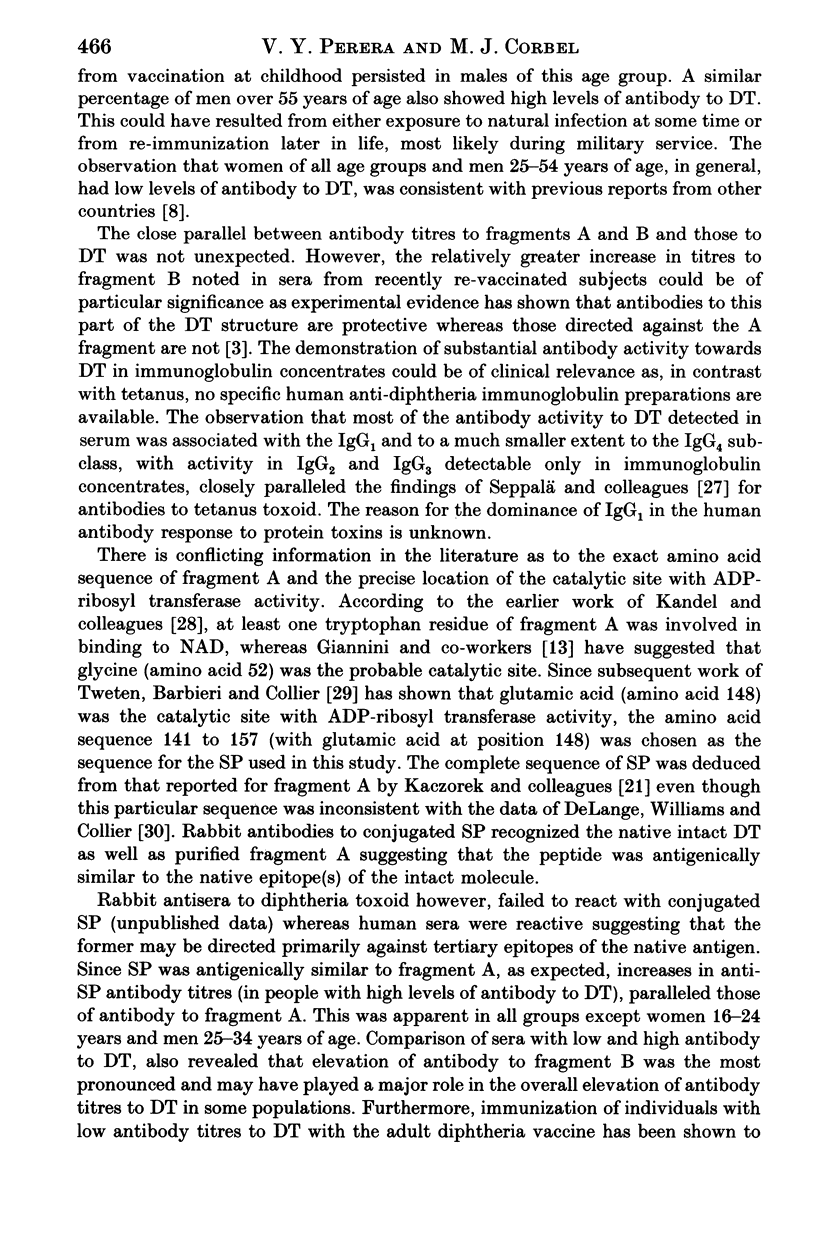
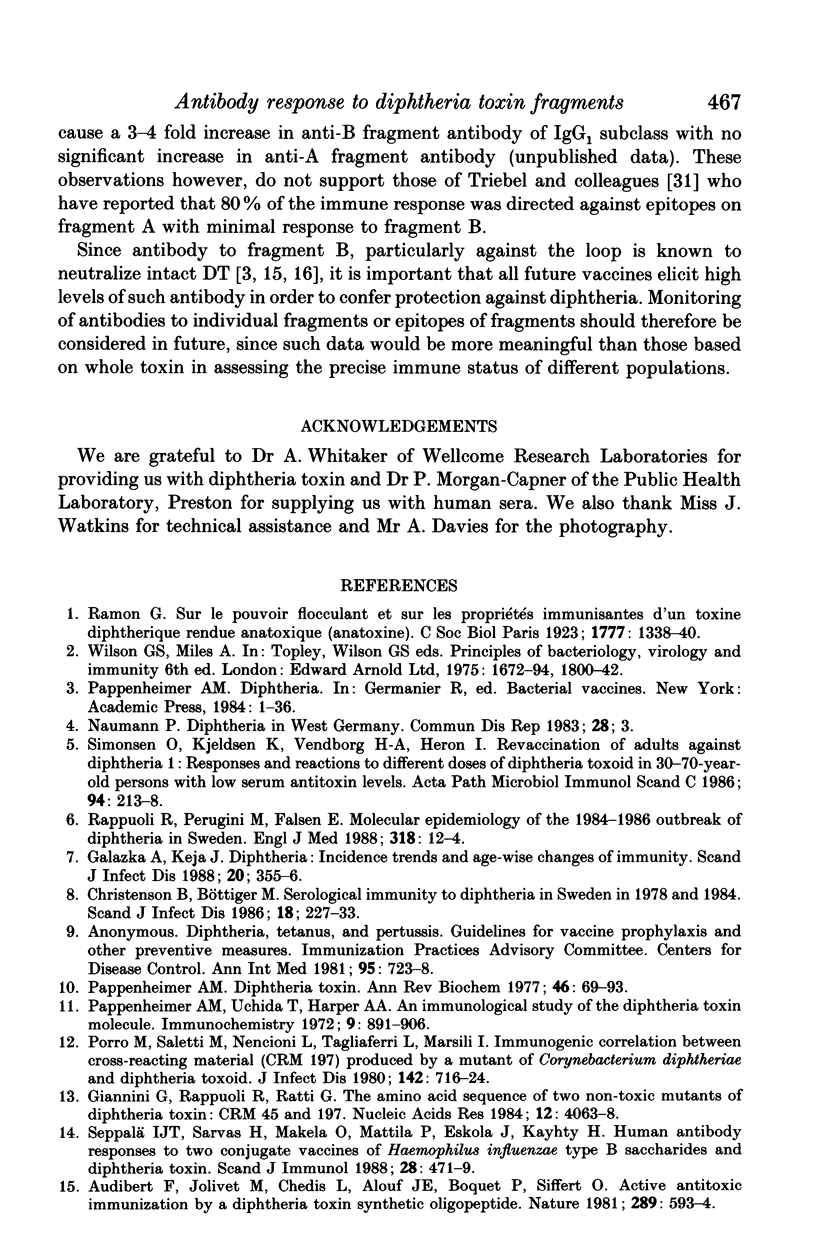

Images in this article
Selected References
These references are in PubMed. This may not be the complete list of references from this article.
- Audibert F., Jolivet M., Chedid L., Alouf J. E., Boquet P., Rivaille P., Siffert O. Active antitoxic immunization by a diphtheria toxin synthetic oligopeptide. Nature. 1981 Feb 12;289(5798):593–594. doi: 10.1038/289593a0. [DOI] [PubMed] [Google Scholar]
- Audibert F., Jolivet M., Chedid L., Arnon R., Sela M. Successful immunization with a totally synthetic diphtheria vaccine. Proc Natl Acad Sci U S A. 1982 Aug;79(16):5042–5046. doi: 10.1073/pnas.79.16.5042. [DOI] [PMC free article] [PubMed] [Google Scholar]
- Christenson B., Böttiger M. Serological immunity to diphtheria in Sweden in 1978 and 1984. Scand J Infect Dis. 1986;18(3):227–233. doi: 10.3109/00365548609032331. [DOI] [PubMed] [Google Scholar]
- DeLange R. J., Williams L. C., Drazin R. E., Collier R. J. The amino acid sequence of fragment A, an enzymically active fragment of diphtheria toxin. III. The chymotryptic peptides, the peptides derived by cleavage at tryptophan residues, and the complete sequence of the protein. J Biol Chem. 1979 Jul 10;254(13):5838–5842. [PubMed] [Google Scholar]
- Drazin R., Kandel J., Collier R. J. Structure and activity of diphtheria toxin. II. Attack by trypsin at a specific site within the intact toxin molecule. J Biol Chem. 1971 Mar 10;246(5):1504–1510. [PubMed] [Google Scholar]
- Galazka A., Keja J. Diphtheria: incidence trends and age-wise changes of immunity. Scand J Infect Dis. 1988;20(3):355–356. doi: 10.3109/00365548809032467. [DOI] [PubMed] [Google Scholar]
- Giannini G., Rappuoli R., Ratti G. The amino-acid sequence of two non-toxic mutants of diphtheria toxin: CRM45 and CRM197. Nucleic Acids Res. 1984 May 25;12(10):4063–4069. doi: 10.1093/nar/12.10.4063. [DOI] [PMC free article] [PubMed] [Google Scholar]
- Kaczorek M., Delpeyroux F., Chenciner N., Streeck R. E., Murphy J. R., Boquet P., Tiollais P. Nucleotide sequence and expression of the diphtheria tox228 gene in Escherichia coli. Science. 1983 Aug 26;221(4613):855–858. doi: 10.1126/science.6348945. [DOI] [PubMed] [Google Scholar]
- Kandel J., Collier R. J., Chung D. W. Interaction of fragment A from diphtheria toxin with nicotinamide adenine dinucleotide. J Biol Chem. 1974 Apr 10;249(7):2088–2097. [PubMed] [Google Scholar]
- Kjeldsen K., Simonsen O., Heron I. Immunity against diphtheria and tetanus in the age group 30-70 years. Scand J Infect Dis. 1988;20(2):177–185. doi: 10.3109/00365548809032435. [DOI] [PubMed] [Google Scholar]
- Laemmli U. K. Cleavage of structural proteins during the assembly of the head of bacteriophage T4. Nature. 1970 Aug 15;227(5259):680–685. doi: 10.1038/227680a0. [DOI] [PubMed] [Google Scholar]
- Lau R. C., Bettelheim K. A., Patel A. C. The 1985 national immunisation survey: diphtheria, tetanus, and pertussis (whooping cough) N Z Med J. 1988 Nov 23;101(858):797–800. [PubMed] [Google Scholar]
- Lau R. C. Detection of diphtheria toxin antibodies in human sera in New Zealand by ELISA. J Hyg (Lond) 1986 Jun;96(3):415–418. doi: 10.1017/s0022172400066171. [DOI] [PMC free article] [PubMed] [Google Scholar]
- Masterton R. G., Tettmar R. E., Pile R. L., Jones J., Croft K. F. Immunity to diphtheria in young British adults. J Infect. 1987 Jul;15(1):27–32. doi: 10.1016/s0163-4453(87)91351-x. [DOI] [PubMed] [Google Scholar]
- Melville-Smith M., Balfour A. Estimation of Corynebacterium diphtheriae antitoxin in human sera: a comparison of an enzyme-linked immunosorbent assay with the toxin neutralisation test. J Med Microbiol. 1988 Apr;25(4):279–283. doi: 10.1099/00222615-25-4-279. [DOI] [PubMed] [Google Scholar]
- Pappenheimer A. M., Jr Diphtheria toxin. Annu Rev Biochem. 1977;46:69–94. doi: 10.1146/annurev.bi.46.070177.000441. [DOI] [PubMed] [Google Scholar]
- Pappenheimer A. M., Jr, Uchida T., Harper A. A. An immunological study of the diphtheria toxin molecule. Immunochemistry. 1972 Sep;9(9):891–906. doi: 10.1016/0019-2791(72)90163-2. [DOI] [PubMed] [Google Scholar]
- Porro M., Saletti M., Nencioni L., Tagliaferri L., Marsili I. Immunogenic correlation between cross-reacting material (CRM197) produced by a mutant of Corynebacterium diphtheriae and diphtheria toxoid. J Infect Dis. 1980 Nov;142(5):716–724. doi: 10.1093/infdis/142.5.716. [DOI] [PubMed] [Google Scholar]
- Rappuoli R., Perugini M., Falsen E. Molecular epidemiology of the 1984-1986 outbreak of diphtheria in Sweden. N Engl J Med. 1988 Jan 7;318(1):12–14. doi: 10.1056/NEJM198801073180103. [DOI] [PubMed] [Google Scholar]
- Seppälä I. J., Routonen N., Sarnesto A., Mattila P. A., Mäkelä O. The percentages of six immunoglobulin isotypes in human antibodies to tetanus toxoid: standardization of isotype-specific second antibodies in solid-phase assay. Eur J Immunol. 1984 Sep;14(9):868–875. doi: 10.1002/eji.1830140918. [DOI] [PubMed] [Google Scholar]
- Seppälä I., Sarvas H., Mäkelä O., Mattila P., Eskola J., Käyhty H. Human antibody responses to two conjugate vaccines of Haemophilus influenzae type B saccharides and diphtheria toxin. Scand J Immunol. 1988 Oct;28(4):471–479. doi: 10.1111/j.1365-3083.1988.tb01478.x. [DOI] [PubMed] [Google Scholar]
- Simonsen O., Kjeldsen K., Vendborg H. A., Heron I. Revaccination of adults against diphtheria. I: Responses and reactions to different doses of diphtheria toxoid in 30-70-year-old persons with low serum antitoxin levels. Acta Pathol Microbiol Immunol Scand C. 1986 Oct;94(5):213–218. doi: 10.1111/j.1699-0463.1986.tb02114.x. [DOI] [PubMed] [Google Scholar]
- Towbin H., Staehelin T., Gordon J. Electrophoretic transfer of proteins from polyacrylamide gels to nitrocellulose sheets: procedure and some applications. Proc Natl Acad Sci U S A. 1979 Sep;76(9):4350–4354. doi: 10.1073/pnas.76.9.4350. [DOI] [PMC free article] [PubMed] [Google Scholar]
- Triebel F., Autran B., De Roquefeuil S., Falmagne P., Debré P. Immune response to diphtheria toxin and to different CNBr fragments: evidence for different B and T cell reactivities. Eur J Immunol. 1986 Jan;16(1):47–53. doi: 10.1002/eji.1830160110. [DOI] [PubMed] [Google Scholar]
- Tweten R. K., Barbieri J. T., Collier R. J. Diphtheria toxin. Effect of substituting aspartic acid for glutamic acid 148 on ADP-ribosyltransferase activity. J Biol Chem. 1985 Sep 5;260(19):10392–10394. [PubMed] [Google Scholar]



